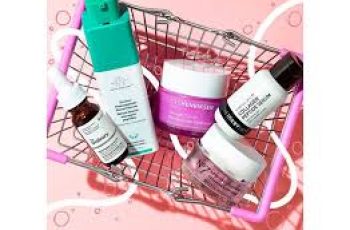
If you consider yourself well-versed in skincare, discovering new ingredients that surprise you might feel rare, but every now and then, one catches your attention and prompts a double take.
That’s exactly what happened to me the day I stumbled upon salicylic acid in its pure, powdered form, tucked away on a supplier’s website while researching BHA exfoliants.
At first, I felt a bit silly for not knowing about it sooner, but as I read more, it started to make perfect sense that this powerful beta hydroxy acid could exist in such a potent, customizable state.
Now that I’ve explored how salicylic acid powder works, how to mix it, how to apply it, and most importantly, how to use it safely, I’m ready to share everything I’ve learned.
Whether you’re new to this ingredient or looking to create a DIY formulation at home, this comprehensive guide will help you navigate salicylic acid powder with confidence.
What Is Salicylic Acid Powder, and Why Use It?
Salicylic acid is one of the most popular beta hydroxy acids (BHAs) in skincare due to its ability to penetrate deep into pores and clear out excess oil, dirt, bacteria, and dead skin cells.
This makes it especially effective for acne-prone, oily, or congested skin types, and it’s found in countless cleansers, toners, serums, and spot treatments for breakouts.
In powdered form, salicylic acid offers a customizable approach, letting users control the potency and base of the formula for targeted treatments or specialized skincare needs.
Beyond acne, salicylic acid can also help treat warts, corns, calluses, dandruff, and even some cases of psoriasis when used in higher concentrations under medical guidance.
However, because salicylic acid powder is highly concentrated, it must be handled with care and always properly diluted before applying to the skin to avoid irritation or chemical burns.
You can find this ingredient available for purchase through specialty skincare retailers or pharmacies, sometimes requiring a prescription depending on local regulations.
When in doubt or if you have sensitive skin or ongoing skin conditions, it’s always a good idea to check with your doctor or dermatologist before starting a new BHA regimen.
How to Mix Salicylic Acid Powder at Home
If you’re interested in creating your own salicylic acid solution at home, there are a few important guidelines to follow for both safety and efficacy of your formulation.
Here’s a step-by-step method for mixing salicylic acid powder into a usable skincare solution that can help treat acne, exfoliate skin, and improve overall texture and clarity.
Step One: Choose a Carrier Oil for the Base of Your Formula
The carrier oil is the foundation of your product and serves as the medium that delivers the active salicylic acid into the skin while also offering moisturizing benefits.
If your skin tends to be oily or acne-prone, consider using lightweight, non-comedogenic oils like jojoba oil, grapeseed oil, or even hemp seed oil for fast absorption and balance.
For drier or more mature skin, richer oils like sweet almond, avocado, or rosehip oil may provide more nourishment and work better to soften rough patches or fine lines.
Whichever oil you choose, make sure it’s cold-pressed and of cosmetic-grade quality to ensure the purity and stability of your final product.
Step Two: Select an Essential Oil (Optional Step)
Adding an essential oil is entirely optional and should be avoided by those with sensitive or reactive skin, as these oils can trigger irritation or allergic reactions in some users.
If your skin tolerates essential oils well, consider tea tree oil for its antibacterial and acne-fighting properties or lavender oil for calming inflamed, red, or irritated skin.
Use only a small amount—generally around 20 drops per 100ml of carrier oil—to maintain safety and avoid overwhelming the skin or throwing off the balance of your formulation.
Essential oils are powerful, so always perform a patch test before applying your DIY salicylic acid solution to your face, especially if it contains any additional actives.
Step Three: Add the Salicylic Acid Powder
Here’s where things get technical—adding too much salicylic acid powder can cause skin burns or intense peeling, while too little may not provide the results you’re aiming for.
A general guideline for effective formulations is to keep salicylic acid concentrations between 0.5% and 2% for leave-on products used at home.
Since powder weights vary based on density and particle size, always refer to the manufacturer’s instructions for exact dilution measurements.
As a starting point, you can use around 1 gram (approximately ¼ teaspoon) of powder for every 100ml of oil-based solution to keep your concentration in a safe range.
Always wear gloves and use clean tools when handling salicylic acid powder, and never attempt to eyeball the amount, as precision is crucial to avoid damaging your skin.
Step Four: Use Propylene Glycol to Dissolve the BHA Properly
Salicylic acid doesn’t dissolve well in water alone, and even many oils struggle to fully incorporate the powder, leading to grainy or unstable results.
The best way to dissolve salicylic acid powder is by using propylene glycol—a clear, odorless liquid found in pharmacies and cosmetic supply shops.
Mix your powder with a small amount of propylene glycol until it fully dissolves before adding it to your oil base, creating a smooth, homogenous solution.
If you can’t find propylene glycol, some people substitute vegetable glycerin or isopropyl alcohol, though these alternatives may affect stability or absorption.
Step Five: Transfer to an Appropriate Container and Store Safely
Once fully mixed, your salicylic acid solution should be poured into a dark, opaque glass bottle with a dropper or pump to protect it from light and minimize contamination.
Store the bottle in a cool, dry place away from sunlight or temperature fluctuations, which can break down the active ingredients or destabilize the formula.
It’s normal to see slight separation over time—just give the bottle a gentle shake before each use to re-emulsify the contents and maintain consistency.
How Do You Use Salicylic Acid Powder Safely at Home?
Once properly diluted and stored, your salicylic acid solution can be used like any other exfoliating treatment to help reduce acne, blackheads, dullness, and rough skin texture.
Apply a small amount to clean, dry skin using your fingertips or a cotton pad, focusing on problem areas like the T-zone, chin, or wherever you experience breakouts.
Start with once or twice a week to assess your skin’s tolerance, and increase frequency slowly if no irritation occurs, maxing out at every other day for oily skin types.
Never apply salicylic acid to broken, raw, or inflamed skin, and avoid layering it with other exfoliating acids or retinoids to prevent over-exfoliation and dryness.
Follow up with a hydrating serum or moisturizer and always wear broad-spectrum sunscreen daily, as chemical exfoliation increases your skin’s sensitivity to UV rays.
What’s the Best Way to Incorporate Salicylic Acid Into Your Routine?
There are many ways to introduce salicylic acid into your routine, and which one works best depends on your skin type, goals, and comfort with DIY formulations.
If you prefer convenience and consistent results, look for professionally formulated exfoliating toners, masks, or overnight serums that contain 1–2% salicylic acid.
For oilier skin types, salicylic acid products can be used once or twice daily depending on how well your skin tolerates the ingredient without becoming dry or irritated.
If your skin leans dry or sensitive, limit usage to a few times per week or explore gentler alternatives like lactic acid, mandelic acid, or polyhydroxy acids (PHAs).
As with any active ingredient, patch testing and gradual introduction are essential to prevent adverse reactions, especially when creating your own skincare products.
Can You Combine Salicylic Acid With Other Actives?
Salicylic acid works well with some actives but should be used carefully with others to avoid overloading or sensitizing your skin barrier.
You can safely pair it with niacinamide for enhanced oil control and calming effects or hyaluronic acid for hydration after exfoliation.
Avoid using it alongside other acids (like glycolic or lactic), retinoids, or benzoyl peroxide during the same application unless directed by a skincare professional.
Final Thoughts on Salicylic Acid Powder and DIY Skincare
While making your own salicylic acid solution at home may seem intimidating at first, with the right tools, knowledge, and precautions, it’s entirely possible to do it safely.
Using powdered salicylic acid lets you tailor your skincare to your exact needs, but it also comes with more responsibility than store-bought formulations.
Take your time, respect the potency of the ingredient, and always prioritize safety by measuring carefully and starting slow with any new treatment.
If you ever feel unsure or need guidance, don’t hesitate to speak with a dermatologist or consult trusted skincare resources to get your questions answered.
Now that you know how to dilute salicylic acid powder and use it effectively, you can explore new ways to level up your skincare routine and target stubborn skin concerns.
And of course, if you have more skincare questions or want to share your experiences, feel free to join the conversation on Instagram—we’d love to hear from you!


